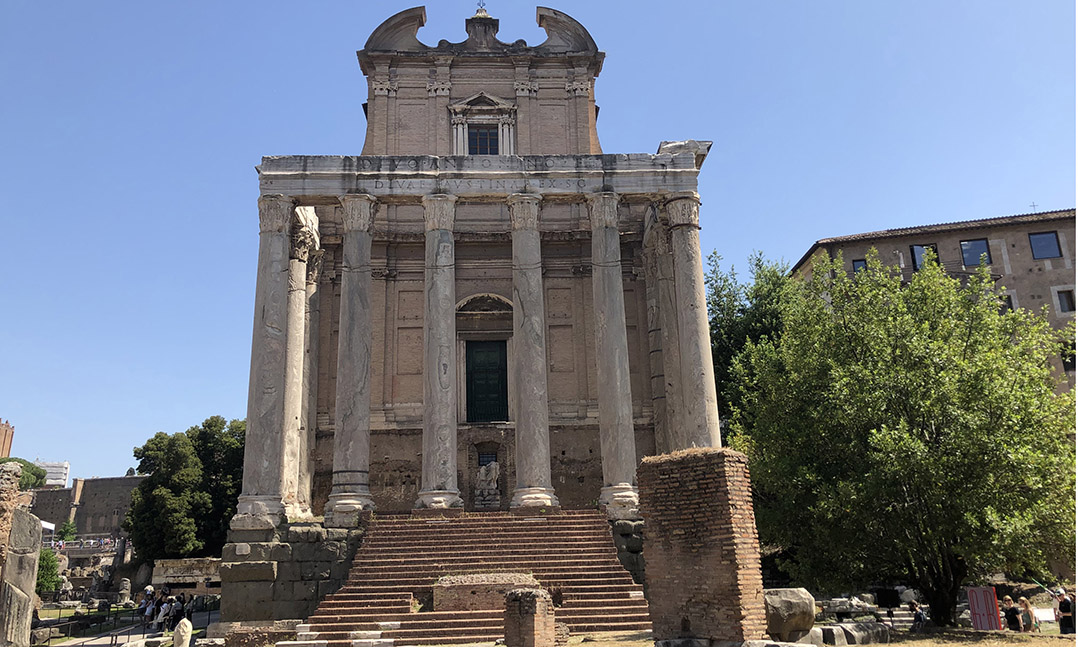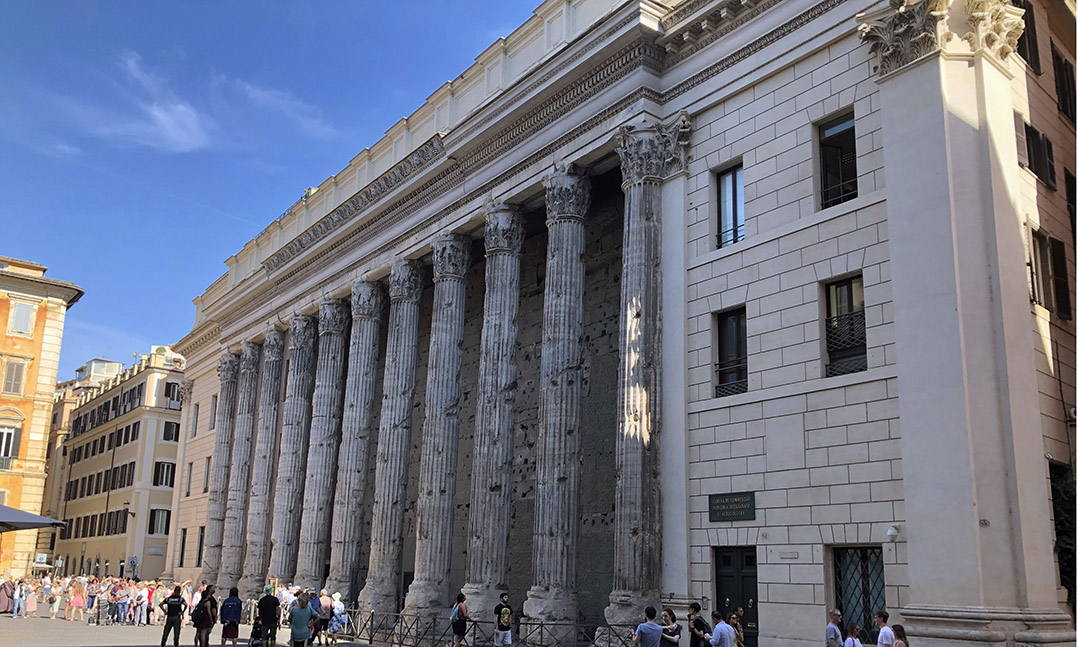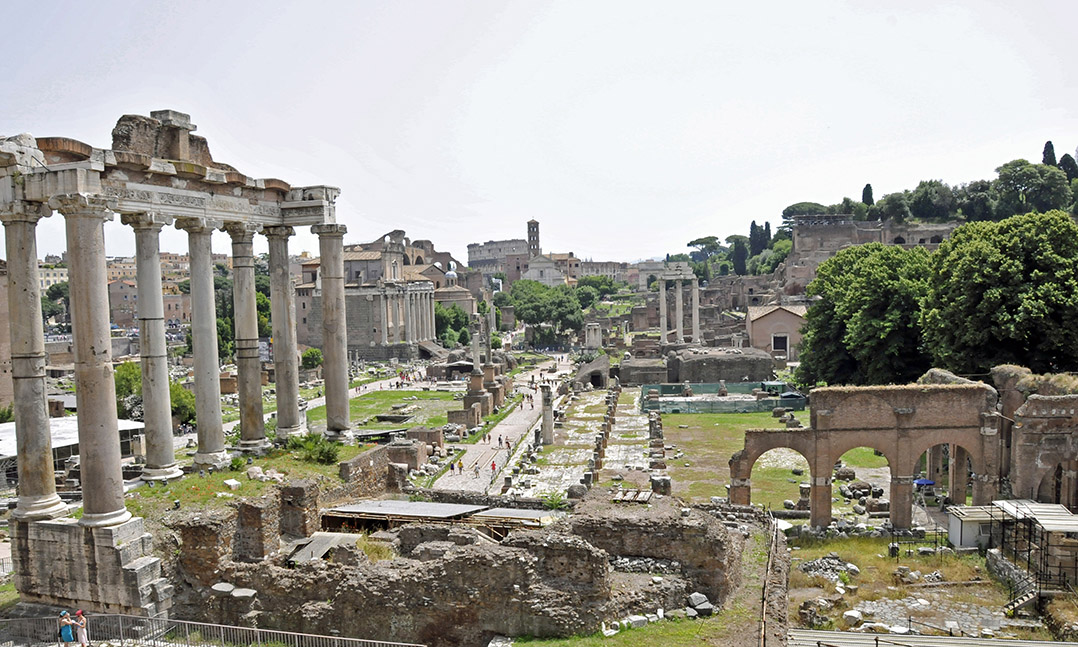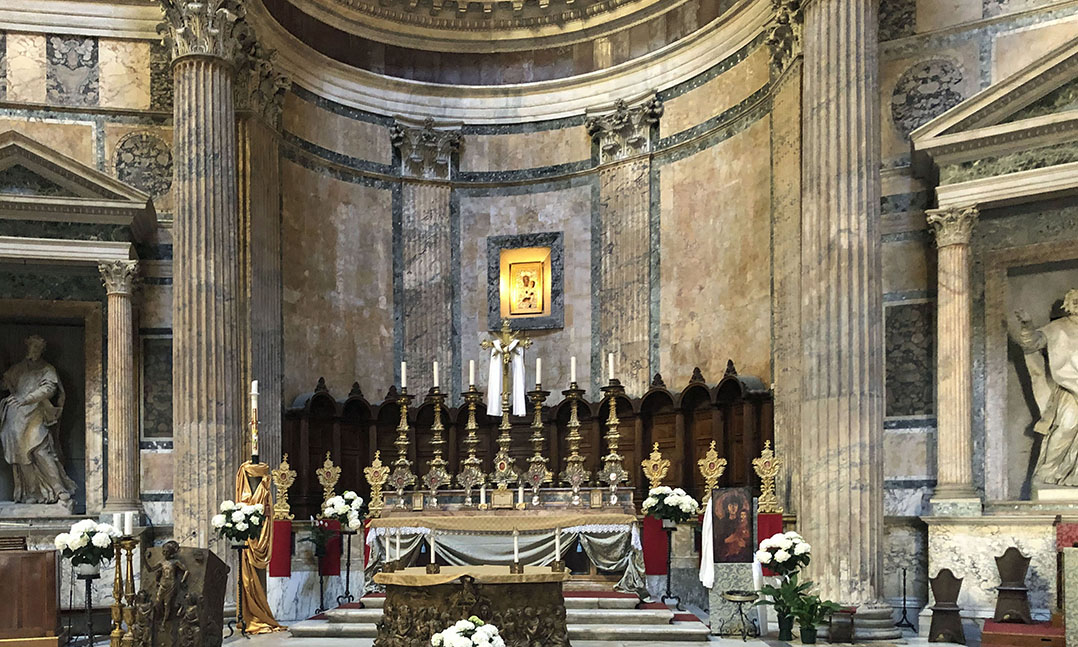Today, in the last column in the series about Rome, we look at some ancient Roman buildings that survived more or less intact because they were reused by Christians.
During the first three centuries A.D., Rome was the largest and most important city in the world. With about 800,000 residents, the city center, including the Roman Forum, featured magnificent marble temples, monuments and administrative buildings. In 410, when the so-called “barbarians,” Arian Christians, first sacked Rome, many of the structures began collapsing and their structural materials began being used in churches. But some of those structures survived because Christians repurposed them.
The Pantheon, dedicated by Emperor Hadrian in about A.D. 26 to honor all the Roman gods, is the most famous of the preserved structures. Its 142-foot-diameter dome, constructed from unreinforced concrete, remains the largest such dome in the world. The Pantheon owes its longevity to its conversion to a church honoring Mary and the Martyrs in 609. A domed cylindrical temple of uncertain significance near the Roman Forum survived when it became the church of Santi Cosma e Damiano in 527. The Curia Julia, the Senate building in the Roman Forum begun by Julius Caesar in 44 B.C., survived because it became the Church of Sant’Adriano al Foro in A.D. 630. The Temple of Antoninus and Faustina, honoring the deified Emperor Antonius Pius and his wife, Faustina, was built in 141 on a platform overlooking the Roman Forum. In the seventh century, it became a church honoring the martyrdom of Lawrence of Rome. Today, because of excavations of the forum, the entrance to the church is far above current ground level. Not all Roman structures survived by becoming churches. The exterior of the colonnaded temple honoring the deified Emperor Hadrian survived because it became a palace authorized by Pope Innocent XII in 1695.






